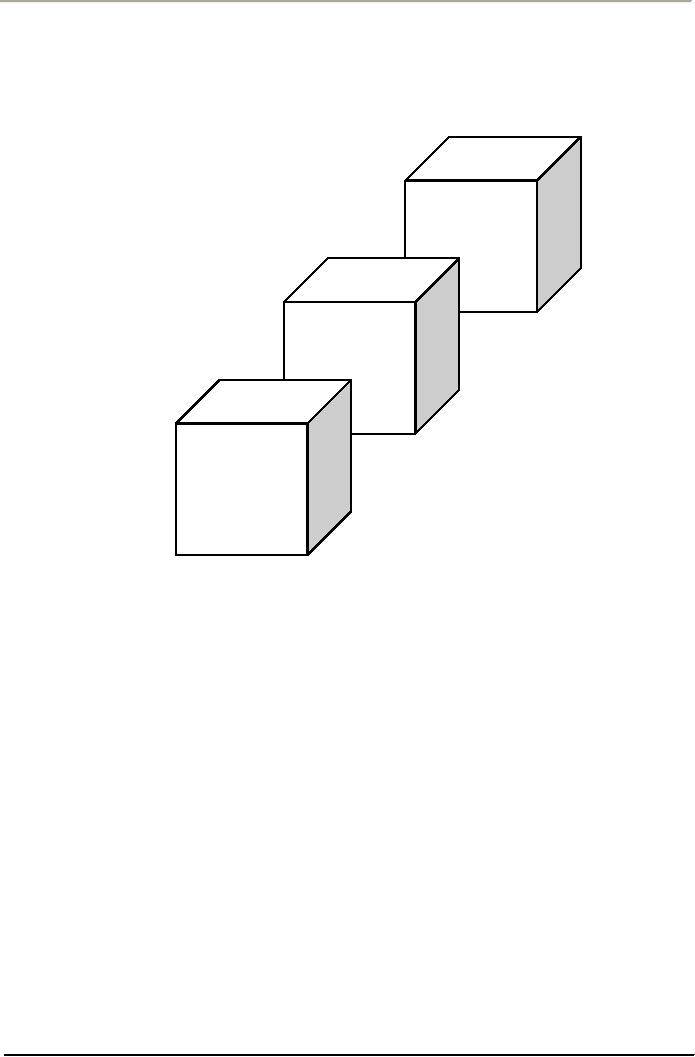 |

Total
Quality Management
MGT510
VU
Lesson
# 16
JURAN
AND CROSBY ON QUALITY AND QUALITY IS
FREE
The
Juran Philosophy and
Trilogy
The
Juran Trilogy� is a registered trademark of Juran
Institute, Inc.
Quality
Improvement
Quality
Control
Quality
Planning
Juran
taught quality principles to the
Japanese in the 1950s just
after Deming and was a
principal force
in
their quality reorganization.
Like Deming, he concludes
that we face a major crisis
due to the loss of
sales
to foreign competition and the huge costs
of poor quality. To solve
this crisis, new thinking
about
quality
that includes all levels of
the managerial hierarchy is required.
Upper management in
particular
requires
training and experience in managing for
quality.
Juran's
programs are designed to fit
into a company's current strategic
business planning with
minimal
risk
of rejection. This is in contrast to
Deming who proposes sweeping
cultural change. Juran
contends
that
employees at different levels of an
organization speak in different
"languages." (Deming
believes
statistics
should be the common language.)
Top
management speaks in the language of
dollars, workers speak in the language of
things, and middle
management
must be able to speak both
languages and translate between dollars and
things. Thus, to get
top
management's attention, quality issues
must be cast in the language they
understand dollars.
Juran
advocates the accounting and analysis of
quality costs to focus attention on
quality problems. At
the
operational level, Juran's focus is on
increasing conformance to specifications through
elimination
of
defects, supported extensively by
statistical tools for analysis. Thus,
his philosophy fits well
into
existing
management systems.
Juran
defines quality as "fitness
for use." (Deming advocates
no specific definition.) This s
broken
down
into four categories: quality of design,
quality of conformance, availability, and
field service.
Quality
of design focuses on market research, the
product concept, and design specifications.
Quality of
conformance
includes technology, manpower, and
management Availability focuses on
reliability,
56

Total
Quality Management
MGT510
VU
maintainability,
and logistical support. Field service
quality comprises promptness,
competence, and
integrity.
Juran
views the pursuit of quality on
two levels: (1) the mission of the
firm as whole is to achieve
high
product
quality, and (2) the mission of each
individual department in the firm is to achieve
high
production
quality. Like Deming, Juran
advocates a never-ending spiral of
activities that
includes
market
research, product development, design,
planning for manufacture, purchasing,
production
process
control, and inspection and
testing, followed by customer feedback.
Because of the
interdependence
of these functions, the need
for competent company-wide quality
management is great.
Senior
management must play an
active and enthusiastic leadership role
in the quality management
process.
Juran's
prescriptions focus on three major aspects of
quality called the Quality
Trilogy.
Quality
planning the process for
preparing to met quality
goals,
Quality
control the process for
meeting quality goals during operations,
and
Quality
improvement the process for
breaking through to unprecedented levels
of performance.
Quality
planning begins with identifying
customers, both external and
internal, determining their
needs,
and
developing product features
that respond to customer
needs.
Quality
control involves determining
what to control, establishing
units of measurement so that
data
may
be objectively evaluated, establishing
standards of performance, measuring actual
performance,
interpreting
the difference between actual performance and the
standard, and taking action on
the
difference.
Juran's
program for quality
improvement involves demonstrating the
need for improvement,
identifying
specific
projects for improvement, organizing to
guide the projects, diagnosing the
causes, providing
remedies
for the causes, proving that
the remedies are effective
under operating conditions,
and
providing
control to hold
improvements.
Quality
Planning:
Quality
planning involves developing the
products, systems, and
process
needed
to meet or exceed customer expectations.
The following steps are
required:
1.
Determine
who the customers
are.
2.
Identify
customers' needs.
3.
Develop
products with features that
respond to customer
needs.
4.
Develop
systems and processes that
allow the organization to produce these
features.
5.
Deploy
the plans to operational levels.
Quality
Control:
The
control of quality involves the
following processes:
1.
Assess
actual quality performance.
2.
Compare
performance with goals.
3.
Act
on differences between performance and goals.
Quality
Improvement: The
improvement of quality should be
ongoing continual:
1.
Develop
the infrastructure necessary to make
annual quality
improvements.
2.
Identify
specific areas in need of
improvement, and implement improvement
projects.
3.
Establish
a project team with
responsibility for completing
each improvement
project.
4.
Provide
teams with what they
need to be able to diagnose problems to
determine root causes
develop
solutions, and establish control that
will maintain gains
made.
57

Total
Quality Management
MGT510
VU
Juran's
assessment of most companies is
that quality control is far
and away the top priority among
the
trilogy
and most companies feel they
are strong in this category.
Quality planning and
quality
improvement,
however, are not important
priorities and are
significantly weaker in most
organizations.
He
feels that more effort needs to be placed
on quality planning and even more on
quality improvement.
Japanese
efforts at quality improvement were
supported by massive training programs
and top
management
leadership. Training in managerial
quality-oriented concepts as well as
training in the tools
for
quality improvement, cost
reduction, data collection, and analysis
is one of the most
important
components
of Juran's philosophy. Juran maintains
that the Japanese experience leaves
little doubt as to
the
significance of the return on quality
training in competitive advantage,
reduced failure costs,
higher
productivity,
smaller inventories, and better delivery
performance.
Crosby's
Philosophy and Contributions
Philip
B. Crosby started his career in
quality later than Deming
and Juran. His corporate
background
includes
14 years as director of quality at ITT
(1965-1979). He left ITT in 1979 to
form Philip Crosby
Associates,
an international consulting firm on
quality improvement, which he ran
until 1992, when he
retired
as CEO to devote his time to
lecturing on quality related
issues.
Crosby,
who defines quality simply
as conformance to customer requirements, is best
known for his
advocacy
of zero defects management and
prevention as opposed to statistically
acceptable levels of
quality.
He is also known for his
work on Costs of Quality,
Quality is Free and Crosby's Fourteen
Steps
to
Quality Improvement.
The
essence of Crosby's quality
philosophy is embodied in what he calls
the Absolutes of Quality
Management
and the Basic Elements of Improvement..
Crosby's
Absolutes of Quality Management
are as follows:
�
Quality
means conformance to requirements
not elegance. Crosby
dispels the myth that quality
is
simply
a feeling of "excellence." Requirements
must be clearly stated so
that they cannot be
misunderstood.
Requirements are communication devices
and are ironclad. Once a
task is done, one
can
take measurements to determine
conformance to requirements. The nonconformance
detected is
the
absence of quality. Quality problems
become nonconformance problems that is,
variation in
output.
Setting requirements is the responsibility of
management.
�
There
is no such thing as a quality problem.
Problems
must be identified by the individuals
or
departments
that cause them. There are
accounting problems, manufacturing problems,
design
problems,
front-desk problems, and so on. Quality
originates in functional departments,
not in the
quality
department, and the burden of responsibility
for such problems lies with
the functional
departments.
The quality department should
measure conformance, report results, and
lead the drive
to
develop a positive attitude
toward quality improvement.
This is similar to number 3 of
Deming's
Points.
�
There
is no such thing as the economics of
quality: it is
always cheaper to do the job right the
first
time.
Crosby
supports the premise that "economics of
quality" has no meaning.
Quality is free.
What
costs money are all the
actions that involve not
doing jobs right the first
time. The Deming
Chain
Reaction provides a similar
message.
58
Table of Contents:
- OVERVIEW OF QUALITY MANAGEMENT:PROFESSIONAL MANAGERIAL ERA (1950)
- TOTAL QUALITY MANAGEMENT AND TOTAL ORGANIZATION EXCELLENCE:Measurement
- INTEGRATING PEOPLE AND PERFORMANCE THROUGH QUALITY MANAGEMENT
- FUNDAMENTALS OF TOTAL QUALITY AND RATERS VIEW:The Concept of Quality
- TOTAL QUALITY MANAGEMENT AND GLOBAL COMPETITIVE ADVANTAGE:Customer Focus
- TOTAL QUALITY MANAGEMENT AND PLANNING FOR QUALITY AT OFFICE
- LEADERS IN QUALITY REVOLUTION AND DEFINING FOR QUALITY:User-Based
- TAGUCHI LOSS FUNCTION AND QUALITY MANAGEMENT
- WTO, SHIFTING FOCUS OF CORPORATE CULTURE AND ORGANIZATIONAL MODEL OF MANAGEMENT
- HISTORY OF QUALITY MANAGEMENT PARADIGMS
- DEFINING QUALITY, QUALITY MANAGEMENT AND LINKS WITH PROFITABILITY
- LEARNING ABOUT QUALITY AND APPROACHES FROM QUALITY PHILOSOPHIES
- TOTAL QUALITY MANAGEMENT THEORIES EDWARD DEMING’S SYSTEM OF PROFOUND KNOWLEDGE
- DEMING’S PHILOSOPHY AND 14 POINTS FOR MANAGEMENT:The cost of quality
- DEMING CYCLE AND QUALITY TRILOGY:Juran’s Three Basic Steps to Progress
- JURAN AND CROSBY ON QUALITY AND QUALITY IS FREE:Quality Planning
- CROSBY’S CONCEPT OF COST OF QUALITY:Cost of Quality Attitude
- COSTS OF QUALITY AND RETURN ON QUALITY:Total Quality Costs
- OVERVIEW OF TOTAL QUALITY APPROACHES:The Future of Quality Management
- BUSINESS EXCELLENCE MODELS:Excellence in all functions
- DESIGNING ORGANIZATIONS FOR QUALITY:Customer focus, Leadership
- DEVELOPING ISO QMS FOR CERTIFICATION:Process approach
- ISO 9001(2000) QMS MANAGEMENT RESPONSIBILITY:Issues to be Considered
- ISO 9001(2000) QMS (CLAUSE # 6) RESOURCES MANAGEMENT:Training and Awareness
- ISO 9001(2000) (CLAUSE # 7) PRODUCT REALIZATION AND CUSTOMER RELATED PROCESSES
- ISO 9001(2000) QMS (CLAUSE # 7) CONTROL OF PRODUCTION AND SERVICES
- ISO 9001(2000) QMS (CLAUSE # 8) MEASUREMENT, ANALYSIS, AND IMPROVEMENT
- QUALITY IN SOFTWARE SECTOR AND MATURITY LEVELS:Structure of CMM
- INSTALLING AN ISO -9001 QM SYSTEM:Implementation, Audit and Registration
- CREATING BUSINESS EXCELLENCE:Elements of a Total Quality Culture
- CREATING QUALITY AT STRATEGIC, TACTICAL AND OPERATIONAL LEVEL
- BIG Q AND SMALL q LEADERSHIP FOR QUALITY:The roles of a Quality Leader
- STRATEGIC PLANNING FOR QUALITY AND ADVANCED QUALITY MANAGEMENT TOOLS
- HOSHIN KANRI AND STRATEGIC POLICY DEPLOYMENT:Senior Management
- QUALITY FUNCTION DEPLOYMENT (QFD) AND OTHER TOOLS FOR IMPLEMENTATION
- BASIC SQC IMPROVEMENT TOOLS:TOTAL QUALITY TOOLS DEFINED
- HOW QUALITY IS IMPLEMENTED? A DIALOGUE WITH A QUALITY MANAGER!
- CAUSE AND EFFECT DIAGRAM AND OTHER TOOLS OF QUALITY:Control Charts
- STATISTICAL PROCESS CONTROL (SPC) FOR CONTINUAL QUALITY IMPROVEMENT
- STATISTICAL PROCESS CONTROL….CONTD:Control Charts
- BUILDING QUALITY THROUGH SPC:Types of Data, Defining Process Capability
- AN INTERVIEW SESSION WITH OFFICERS OF A CMMI LEVEL 5 QUALITY IT PAKISTANI COMPANY
- TEAMWORK CULTURE FOR TQM:Steering Committees, Natural Work Teams
- UNDERSTANDING EMPOWERMENT FOR TQ AND CUSTOMER-SUPPLIER RELATIONSHIP
- CSR, INNOVATION, KNOWLEDGE MANAGEMENT AND INTRODUCING LEARNING ORGANIZATION